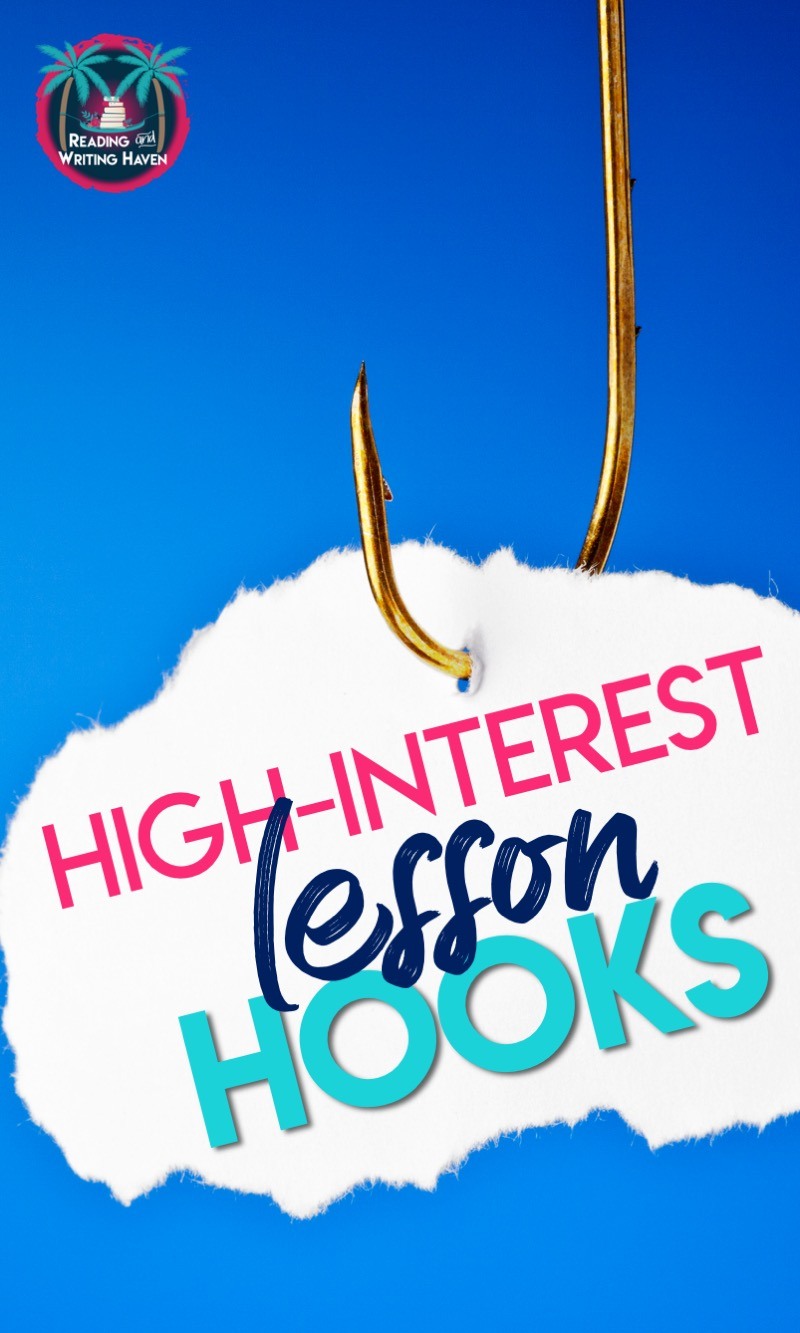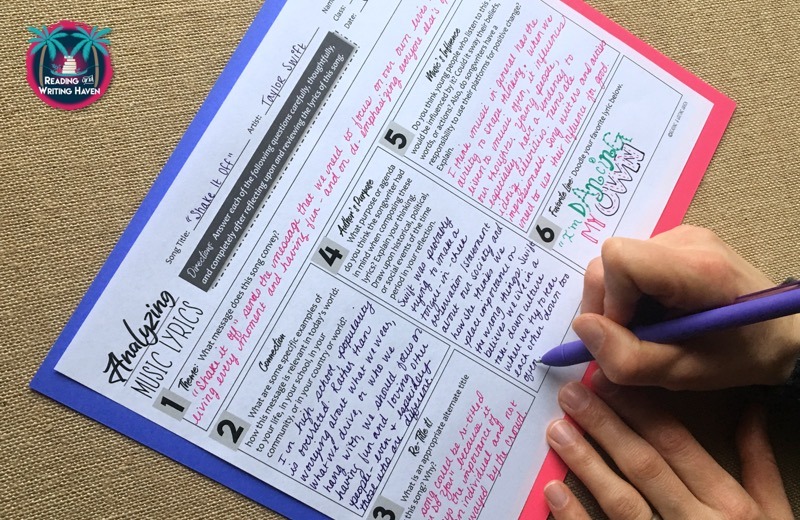Lesson Planning Tips: The Anticipatory Set
And today, class, we will be talking about William Shakespeare and the Globe Theater. Please get out your notebooks and pens while I pull up the slide show.
Are you asleep yet? Clearly, that’s not a good example of an anticipatory set. Some of us might not have used the term “anticipatory set” since college. But, since we are talking about how to make effective lesson openings, we might as well call them what they are.
Anticipatory sets are short snippets at the beginning of a lesson that capture students’ attention. They may also help to activate prior knowledge, to bridge one day’s lesson to the next, and prepare students for fresh learning.
The best lesson introductions are creative, unexpected, and thought-provoking. To make them memorable, try appealing to the senses. Let’s explore five hook categories you could use when planning for your next classroom adventure!
KINESTHETIC HOOK
One way to make an anticipatory set engaging to students is to involve them kinesthetically.
Move around. In his book, Teach Like a Pirate, Dave Burgess suggests turning your classroom into a giant opinion meter. Students can stand in corners or sides of the room to indicate their opinion on or understanding of a certain question or debate.
Do some acting! If you are getting ready to begin a new vocabulary unit or read a new story, assign students a word or idea. Have them act out this word or idea in front of the class or in small groups. For example, if the new word is haughty, you could assign a student to act out the word arrogant. If the student’s performance is memorable, the whole class now has a lasting connection to the new word. If students are not keen on the idea of acting, you can do this, too!
Use manipulatives.
Writing? Let students play with their ideas before drafting an essay, in makerspace style. Incorporate Play Doh, tinker toys, or mirrors.
Grammar? Let students play with pieces of paper, blocks, or legos to see how clauses and phrases can work together or how punctuation can change the way a sentence reads.
Figurative language? Ask students to reach into a box and feel an object, but don’t let them see it. Then, have them describe it. Maybe they touch cold spaghetti noodles and peeled grapes. They might describe the objects as cold, wet, slightly squishy, and slimy. Then, ask them…What would you imagine might feel this way? Perhaps they would say intestines or a bucket of earthworms. This hook could easily lead into a lesson on figurative language or descriptive writing.
Try food. Of course, before bringing in food, make sure to find out about possible allergies. You may even wish to send home a permission slip. When getting ready to read a new story or begin a unit in which students need background knowledge of the culture, food can be an interesting place to begin.
AUDITORY HOOK
An anticipatory set can also be very effective if you appeal to the sense of sound.
Listen to music. Music has a way of setting the mood. It can transport us and define the atmosphere. If you play a song as students enter the room, or if you begin class by examining some lyrics while listening to a tune, most students will be engaged. Tie music into the lesson by leaning in on the theme, the song writer’s craft, the mood, the cultural context, or information revealed about the time period.
You can also use music to introduce humorous grammar fails. Not only does this appeal to students’ interests, but it also makes the discussion relevant and provides an opportunity to talk about why grammar rules are sometimes broken.
Incorporate mystery. Play noises that relate to a text you will be reading or a topic you will be studying. Want to set the mood before reading a story like “The Cask of Amontillado”? Play some music that relates to the setting, and ask students to write or talk about it. Where might this song be set? How does it make you feel? If you were a character in a story that took place in this type of environment, how would you feel?
Write a rap. Maybe you’re in the middle of a unit and looking for a hook to bridge one day’s lesson to the next. Give students the lyrics of a popular song, and have them re-write the lyrics to reflect their understanding of the concept. Musically inclined students may enjoy creating a song or rap from scratch.
VISUAL HOOK
Use video clips. Is there a video clip that captures the context of your next lesson? Help students visualize what life during this time period was like by incorporating visual footage.
Use photographs. No matter what you are teaching, photographs can be a starting point. Pictures can inspire students to write poetry. They can make meaningful associations for vocabulary. Photographs can depict grammar errors from real life. Pictures can also provide necessary background information for pre-reading.
“The Scarlet Ibis,” for instance, references palm fronds and other swamp terms. If students cannot visualize the setting, they will have a harder time understanding the story.
Play short films. I always use short films to introduce literary analysis. Short films are powerful snippets that leave much to interpretation. Because they are creative and engaging, students love discussing them.
Read picture books. Picture books are amazing tools for anticipatory sets because they represent the power of a long text in a very compact format. I like to use picture books to briefly illustrate new concepts and to model think alouds related to those concepts. Figurative language, conflict, character development, dialogue, plot…it’s all there and more.
Show artwork. Art conveys meaning. Use famous artwork to begin discussions with students about upcoming unit or lesson themes. If you’d like to teach author’s craft, artwork can be a tangible place to begin. Analyze how artists create their pieces through unique approaches, like Van Gogh’s brush strokes, and then use that discussion to transition into how authors also have unique writing styles that define their work.
Create a collage. Pair together images, words, and quotes that relate to the topic of study. Ask students to make prediction based upon the information on the slide. Even better, after studying the unit, ask students to create this activity for the NEXT year’s group of students to discuss.
EMOTIONAL HOOK
We remember things that tug at our emotions. So, an anticipatory set that is designed to make us think, to get us debating, or to make use feel a certain way can be meaningful.
Fact vs. Opinion. Write several statements on the board related to the day’s lesson. In small groups or with elbow partners, students can discuss which of the statements are facts and which are opinions…or which are fact and which are false.
Intriguing Question. Write an intriguing question on the board. For instance, if you are preparing to study To Kill a Mockingbird, you could use a question like, “In order to be courageous, do you have to do something different than the way it’s always been done?”
Debate Statements. Any time a respectful debate takes place, students learn. Their minds are opened up to other viewpoints, cultural understandings, and personal biases. When teaching literature, start each lesson with a statement that can be argued from several different directions. These work well with writing units also. For instance, ask students a question that is currently relevant: Is social media causing sleep deprivation and mood swings?
RELEVANCE HOOK
We can be intentional about showing students how lessons relate to real life. One simple avenue to do that is through the anticipatory set.
Watch commercials. If you’re entering a propaganda, political, or persuasive style unit, it can be interesting to watch commercials, or even short news segments to begin the conversation and make learning relevant. These sources are also helpful in studying media literacy and bias.
Student interests. Know your students interests, and incorporate them when possible. Is there any way to use the trends, fads, and pop culture references students enjoy into your lesson hook?
Generate questions. Open up opportunities for students to generate questions about the topic. What do they want to know? What curiosity can you evoke from them? For instance, if you are studying ethos, pathos, and logos, show students a commercial video clip, advertisement, or photo montage. Then, assign each student a blank Google Slide that is part of a whole class presentation. On the slide, tell students to put GIFs, emojis, reactions, and questions about the topic. You can also do this with Padlet or other platforms.
I hope this list of lesson hooks will help you when planning your next anticipatory set. First impressions really do matter. Engage students, spark their curiosity, and show them the relevance from the beginning. The challenge? For your next lesson, create an anticipatory set that truly raises the bar for learning.
RELATED RESOURCE:
Download this free analyzing music graphic organizer! Use it to incorporate literary analysis and poetry into your curriculum.


